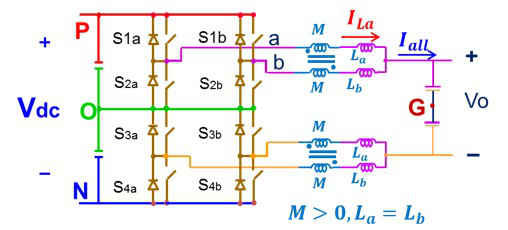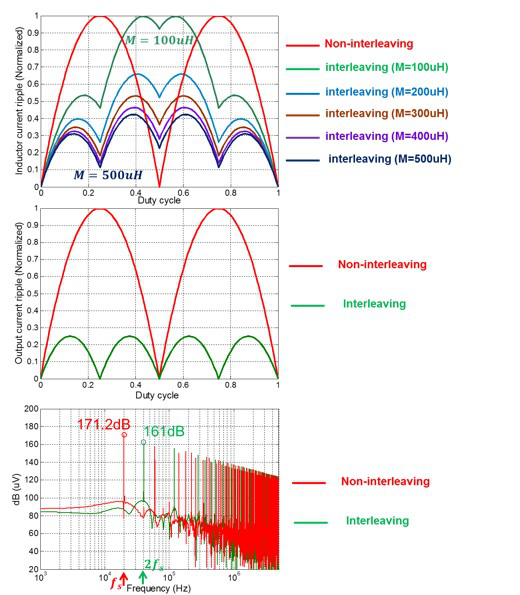LIBRARY
Coupled inductor in interleaved multiphase three-level DC-DC Converters for High Power Energy Storage Applications

An interleaved two-phase three-level DC-DC converters circuit topology is shown in Fig.1. Two inverse-coupled inductors are employed as the interface between the phase legs and common output capacitors. If a non-coupled inductor is used to maintain the inductance of the inductor, the interleaving operation between the two phases will increase the inductor current ripple while the overall current ripple and Common Mode voltage will be reduced, which makes the input and output capacitors as well as CM filter smaller.
To reduce the inductor current ripple, a coupled inductor is employed to reduce the size of inductor. By adding a coupled inductor, an inductor current ripple can be reduced as shown in Fig.2. The maximal inductor current ripple can be much smaller than non-interleaving operation mode. By interleaving operation, output current ripple and CM voltage can also be reduced as shown in Fig.2. Therefore, by adding a coupled inductor and interleaving, it is possible to achieve a smaller inductor current ripple, smaller input and output capacitors, as well as a smaller CM filter simultaneously.
For interleaved multiphase three-level DC-DC converters, multiphase inverse-coupled inductors are needed, and overall current ripple and CM voltage will be further reduced when compared with the interleaved two phase case.























































































